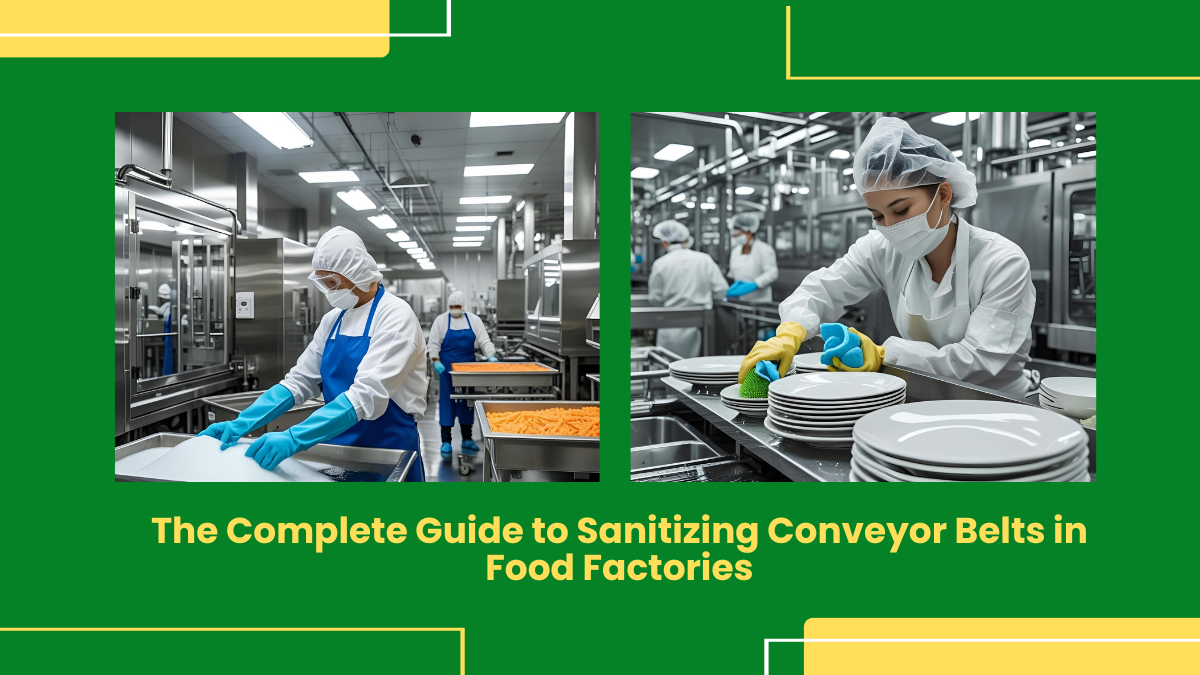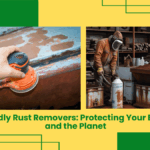Introduction
Conveyor belts are the lifeline of food production. From dough handling to packaging, they move raw and finished products through each step of the process. But with their constant exposure to organic matter, moisture, and heat, conveyor belts can become breeding grounds for harmful bacteria if not cleaned properly.
This guide explores the real-world problems food factories face in sanitizing conveyor belts, practical solutions to address them, and essential prevention tips—all while naturally integrating keywords like sanitizing conveyor belts, food factory cleaning, and industrial sanitizers.
The Problem with Sanitizing Conveyor Belts
1. Hidden Contaminants
Even if a conveyor belt looks clean, food particles, oils, and moisture can hide in crevices, joints, and under the belt. These residues create ideal conditions for bacteria like Listeria, Salmonella, and E. coli to grow—posing serious health risks and regulatory violations.
2. Interruptions in Production
Cleaning conveyor belts often requires halting production, especially if manual disassembly is needed. This downtime can result in productivity losses and increased labor costs.
3. Use of Harsh Chemicals
Many industrial sanitizers contain acids, bleach, or other corrosive substances that can degrade the belt material over time, damage equipment, and even pose safety hazards to staff.
4. Inconsistent Cleaning Practices
Without a standardized cleaning schedule and method, hygiene standards vary from shift to shift. This inconsistency can lead to unnoticed build-up or poor sanitation results.
5. Regulatory Pressure
Food factories are under increasing pressure to comply with FSSAI, HACCP, and other international hygiene standards. Failure to maintain clean belts can result in penalties, recalls, or loss of business partnerships.
Practical Solutions for Conveyor Belt Cleaning
1. Use Food-Safe Industrial Sanitizers
Switch to food-grade industrial sanitizers that are non-toxic, biodegradable, and safe for both belt materials and factory staff. Ecochem offers cleaning solutions designed specifically for the food industry—delivering effective sanitation without strong fumes or harmful residues.
Eco-Germ O Kill For Multipurpose Disinfection & Sanitization
At Ecochem, we stand in support for greener alternatives, which is why we bring you green solutions for your sanitation needs while ensuring the safety and hygiene standards are met. This is especially true in today’s times where the coronavirus pandemic has left substantial death tolls and extensive economic disarray worldwide. It is essential to ensure that all surfaces are disinfected to ensure a safe household or work environment. We provide that all our products are environmentally-safe, non-toxic, and non-hazardous, odor-free and leave no residue to give a fresh finish with a pleasant fragrance.
Key Benefits of Ecochem Solutions:
- Non-corrosive formula safe for regular use
- Removes oils, proteins, and sugars effectively
- Leaves no harmful residue
- Suitable for high-moisture environments
2. Integrate Clean-in-Place (CIP) Systems
Modern conveyor systems can be fitted with Clean-in-Place technology that allows cleaning without full disassembly. CIP systems use automated spray nozzles to apply sanitizer during scheduled cleaning cycles—minimizing downtime while ensuring thorough sanitation.
Why it Works:
- Reduces cleaning time by up to 60%
- Limits human error in cleaning procedures
- Ensures consistent chemical dosage
3. Schedule Frequent, Low-Impact Cleaning
Rather than relying on deep cleans weekly, introduce frequent light cleaning during short breaks. Using foam-based or spray-based food factory cleaning products ensures continuous hygiene while reducing buildup and avoiding belt degradation.
Eco-Glitter (Dishwasher Gel)
Cleaning dirty and oily utensils are yet another challenge post fulfilling the food lovers. Ecochem has made the work easy with organic chemicals for cleaning named Eco-Glitter(Dishwasher Gel). Our bio-based cleaning products efficiently fights tough stains and oil from the metal surfaces adding shine to the dishware. The natural fragrance of lemon gives the surfaces a freshness and also help easy wash of oily food stains from the utensils.
4. Train and Monitor Staff
Standard operating procedures (SOPs) should be clear, easy to follow, and include visual guides. Training ensures everyone—from new hires to supervisors—understands how to clean belts effectively and safely.
You can also integrate digital signage platforms like Ecochem’s system to:
- Display cleaning schedules in real time
- Send automated reminders to cleaning staff
- Monitor cleaning logs digitally
5. Use Conveyor-Specific Tools
Avoid using generic brushes or cloths that can scratch or damage the belt. Instead, invest in conveyor-specific cleaning tools that reach under and around the belt edges without causing wear.
Prevention Tips: Keeping Belts Clean and Safe Long-Term
1. Conduct Weekly Belt Inspections
Assign a team or individual to inspect belts weekly for signs of residue, wear, or damage. Early detection prevents major cleaning efforts or unexpected maintenance.
2. Create a Cleaning Log System
Track every cleaning cycle, chemical used, and person responsible. A simple digital system or integration with Ecochem’s signage platform can ensure transparency and accountability.
3. Rotate Between Cleaners
Using the same cleaner repeatedly can reduce effectiveness. Rotate between compatible industrial sanitizers to prevent microbial resistance and improve long-term sanitation results.
4. Maintain Proper Ventilation
Ensure that moisture from cleaning or production doesn’t stay trapped around the conveyor belt. Use fans or dehumidifiers to keep air circulating and reduce bacterial growth.
5. Invest in Hygienic Design
If your current conveyor belts are old or difficult to clean, consider switching to modular plastic belts or stainless-steel options with fewer joints and easier access. These designs support better sanitation with less effort.
Why Choose Ecochem for Food Factory Cleaning?
At Ecochem, we understand the complex challenges of maintaining hygiene in food factories. Our industrial sanitizers are made to solve the very problems you face every day—from persistent residue to compliance worries.
Plus, our digital signage platform can enhance your factory’s hygiene workflow by:
- Displaying shift-wise cleaning schedules
- Connecting to over 100 applications for automation
- Providing visual SOPs and reminders on shop-floor screens
With Ecochem, cleaning is smarter, safer, and more consistent.
Final Thoughts
Sanitizing conveyor belts in food factories isn’t just about compliance—it’s about safety, efficiency, and reputation. By identifying common challenges, implementing targeted solutions, and following practical prevention tips, you can create a cleaning system that works without disrupting production.Choose the right tools. Use the right products. Train the right people. And when it comes to food factory cleaning, let Ecochem make the job easier—with industrial sanitizers that work and a platform that keeps everyone informed.
FAQ’s
How often should conveyor belts be sanitized in food factories?
Sanitize daily or between shifts to prevent bacterial growth and meet hygiene standards in food processing environments.
What type of sanitizer is safe for food conveyor belts?
Use food-grade, non-toxic industrial sanitizers that are residue-free and safe for both belt materials and food contact surfaces.
Can conveyor belts be cleaned without stopping production?
Yes, with Clean-in-Place (CIP) systems or quick-drying sanitizers, you can clean belts during brief production pauses.
Why is conveyor belt cleaning important in food factories?
Regular cleaning prevents contamination, ensures food safety, meets regulatory standards, and extends the life of the conveyor system.
How can Ecochem help in conveyor belt cleaning?
Ecochem offers safe industrial sanitizers and digital tools to schedule, display, and track cleaning processes in real time.
Written By: Vinny Jain


